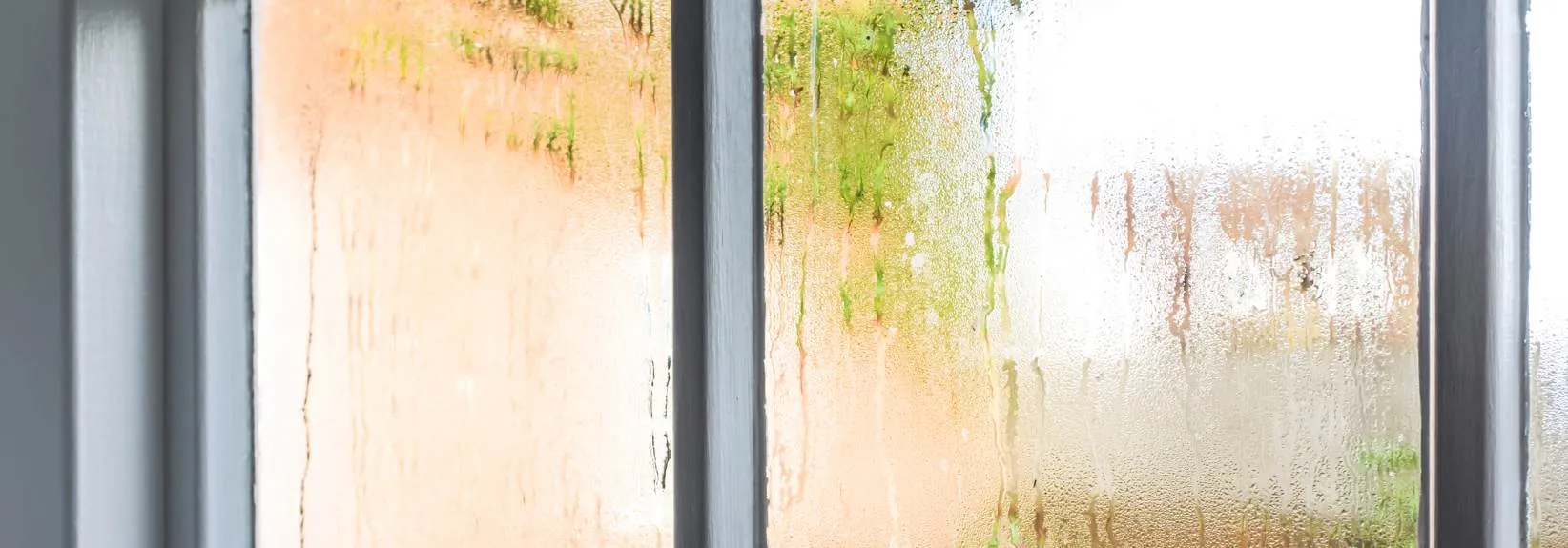Can You Lower Humidity by Running the Air Conditioner?
Unwanted humidity can create multiple problems, such as mold and mildew, musty rooms, structural problems, and an unpleasant muggy feeling. That’s why it’s necessary to control humidity if you hope to increase indoor air quality and home comfort.
The ideal relative humidity level is about 30 to 50 percent. Summer is usually the most challenging time of year to stick within this range. Thankfully, turning on the air conditioner can help.
After all, air conditioning doesn’t solely cool your home—it also decreases humidity. Here’s info about how this works, coupled with tips to balance indoor humidity levels.
How Air Conditioning Removes Humidity
Contrary to what you might think, your air conditioner doesn’t put in cool, dry air in your home—it removes heat and humidity. The process involves refrigerant, which stores heat and moisture effectively from the indoor air. Here’s how it works:
- Indoor air moves through the ductwork and passes over the evaporator coil containing cold refrigerant.
- The refrigerant stores heat, and the moisture in the air accumulates on the coil.
- The condensation falls into the condensate pan below the evaporator coil and drains out of the system.
- Cool, dehumidified air blows back into your home.
Tips to Reduce Humidity
Using the air conditioner will sometimes be enough to bring the relative humidity under 50 percent in dry climates. But if high humidity remains a problem in your home, consider these tips.
Ventilate Effectively
Run the exhaust fan in the bathroom, kitchen and laundry room when you shower, cook and wash clothes. Spot ventilation lowers humidity at the source to keep these rooms cool. You can also open a window when it’s comfortable outside to draw in fresh air.
Clean Up Standing Water
Wet shower tiles, kitchen counters and laundry room floors raise indoor humidity and can stimulate mold growth. Dry any standing water promptly to prevent these problems.
Use a Dehumidifier
If you dislike increased humidity in the summer, consider installing a whole-house dehumidifier that runs in tandem with your air conditioner to make your entire home more comfortable. A whole-house system can even run independently of the AC to lower humidity on milder days without running the air conditioner. This approach saves you money and doesn’t leave you with that “cool but clammy” feeling.
Set the AC Fan to Auto
The condensation that forms on the evaporator coil needs time to build up and drip away. If you use the air conditioning fan continuously, the moisture won’t be able to leave your home. That’s why it’s more efficient to set the fan to “auto” so it only runs when the AC compressor starts. You should be able to change this setting easily on your thermostat.
Swap Out the Air Filter on a Regular Basis
An old filter traps dust and debris and could support mold spores if it becomes wet. This adds more moisture and mold spores into your home any time the AC turns on. Replace the air filter every month or as advised by the manufacturer to reduce indoor humidity and enhance air quality.
Adjust the Fan Speed
Refining the fan speed can be tricky. Higher airflow helps the AC meet your cooling demand on scorching summer days, but this might lead to shorter cycles that minimize the chance of effective dehumidification. Coordinate with an HVAC technician to help you determine the right fan speed for your comfort needs.
Clean the Evaporator Coil
A filthy coil can’t cool and dehumidify efficiently. If your AC is having trouble maintaining the preferred temperature, get in touch with our HVAC specialists to tune up your cooling system and clean the evaporator coil. Cooling and dehumidifying efficiency should improve as a result.
Check the Refrigerant Charge
Insufficient refrigerant can hinder your air conditioner’s ability to perform its job. Left unchecked, severe issues like a frozen evaporator coil or compressor failure may happen. Only a skilled HVAC technician can fix refrigerant leaks and refresh the system as needed, lending you another reason to schedule an AC tune-up.
Exchange Your Air Conditioner
If your home has consistent comfort issues and your air conditioner is getting older, it might be time to replace it. Install a new AC unit with innovative features, including a thermal expansion valve (TXV) and variable blower motor. A TXV offers the perfect amount of refrigerant determined by the air temperature, and a variable blower motor adjusts the fan speed to satisfy demand. Both features increase cooling and dehumidifying effectiveness.
Control Indoor Humidity with Rob's Albertan Service Experts
If you believe it’s time to install a whole-house dehumidifier or replace your AC system, Rob's Albertan Service Experts can help. Our HVAC services are tailored to improve home comfort and energy efficiency for your long-term satisfaction. To raise questions or arrange a visit from one of our certified heating and cooling technicians, please give us a call today.

